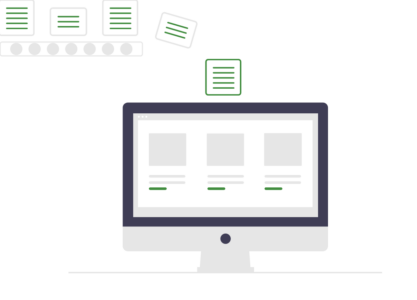Jasmine Birtles
Your money-making expert. Financial journalist, TV and radio personality.

Sponsored post
Do you have a fantastic idea for a second business? Are you having to work extra hustles to pay your way in life?
At MoneyMagpie we have countless ways of making extra money from selling items to providing services.
Indeed, it’s reported 25% of people in the UK today have a side hustle.
Because of this growing trend, the declaration of side hustles has come under new light in recent weeks, and this news is now important to a whopping quarter of the population. With lots of people talking about the so called “side hustle tax” and others stating it is only for “traders”, many people have become confused about their taxes on side-hustles.
This can be said even more so for paying VAT. Lots of people are scared that they should be paying it on side-hustles. So we break down the rules and explain to you.
You will need to declare your side hustle to the Government if you earn over £1000 a year. When you’re selling products or doing something lucrative, this really isn’t much at all. This has always been the case, but why it is suddenly in the news is a slight change in legislation which sees the government able to contact the aggregate for your details.
So, whilst the law hasn’t actually changed, it has become a lot harder to get away with sloppy bookkeeping.
A huge amount of us struggle with taxes simply due to not knowing where to start and how to do it. In truth, the government doesn’t make it easy (anyone who has ever done a self-assessment will back me on this). When it comes to tracking VAT, this becomes even more crucial.
Even if your business is a side-hustle, in the eyes of the law you will be perceived as a business-owner.
As a business owner, you must register for VAT if your turnover surpasses £85,000 – either within the following 30 days or if the revenue collected in the last 12-months is over that amount. If your turnover is under £85,000, you can still register voluntarily.
In some circumstances, you won’t need to register for VAT.
Firstly, you can apply for a registration ‘exception’ by sending HMRC evidence proving that your turnover will not be higher than £83,000 in the next year. This request is adjudicated – so it can be rejected.
Secondly, there are two types of items that do not require VAT – exempt and ‘out of scope’ items. Examples of exempt products and services include buying and selling insurances, postage services, and health services. On the other hand, “out of scope” goods include statutory fees, goods bought and used out of the EU, goods sold as part of a hobby (e.g. stamps), and charity donations (if given nothing in return).
Once you’ve registered for VAT, you must comply with a few responsibilities. One of your main duties is charging the VAT correctly, depending on your rates – standard (most businesses), reduced (e.g. children car seats) or zero rates (e.g. goods exported to non-EU countries). You must also pay any VAT due to HMRC, submit VAT returns, and keep a VAT account with all the records.
You’ll need to keep track of your cashflow for tax returns. Bookkeeping is a skill you need to master, as you will need all your transactions, profits, costs, and revenue documented. You also need to pay Income Tax on your profits and pay Class 2 or Class 4 National Insurance, depending on your earnings.
Another part of your responsibilities is finding a great name for your business. You probably already have this bit figured out, but make sure you don’t include any existing trademarks. If you’re a sole trader also make sure you don’t include words like ‘limited’, ‘Ltd’, ‘LLP’ or ‘plc’.

If you’re making money from a side-hustle or you’re operating a small business and it’s still quite new to you, there are companies that literally do all of the hard work for you and keep you within the law and without the stress. One such company is AbraTax. This is a VAT bridging software that does your VAT submission with HMRC.
Step 1 – Add your VAT registration
Step 2 – Grant AbraTax permission to submit your returns
Step 3 – Fill in your spreadsheets (these are compatible with any computer)
Step 4 – AbraTax will do the rest
AbraTax are offering a month’s free trial to see how you get on.
Click here to give it a go and see how much more pain-free VAT returns can be.
Disclaimer: MoneyMagpie is not a licensed financial advisor and therefore information found here including opinions, commentary, suggestions or strategies are for informational, entertainment or educational purposes only. This should not be considered as financial advice. Anyone thinking of investing should conduct their own due diligence.

Excellent advice